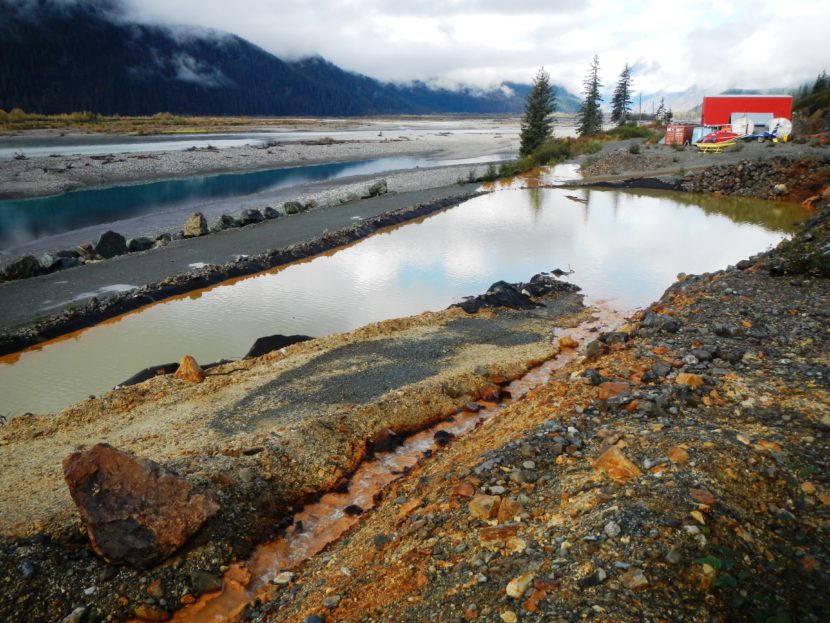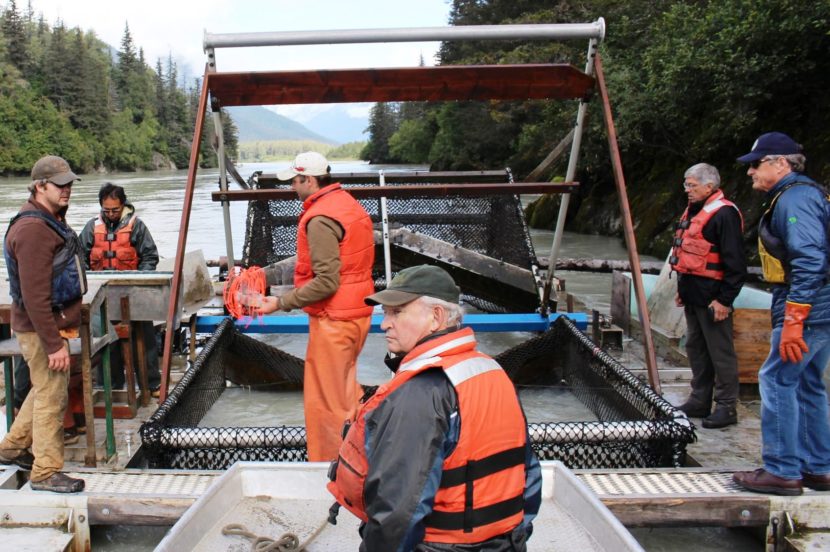
Southeast Alaska tribal groups are calling for cleanup of British Columbia’s long-abandoned Tulsequah Chief Mine.
The call comes as a Canadian investment firm shops the prospect to potential new owners.
The Tulsequah Chief is an underground copper, gold, zinc, lead and silver mine about 40 miles northeast of Juneau.
Acidic wastewater has been draining into the Tulsequah River since the mine shut down 60 years ago. The river is a tributary of a waterway that flows through Alaska into the Pacific.
“The Tulsequah Chief Mine has been polluting the Taku River watershed since the 1950s,” said Frederick Olsen Jr., chairman of the United Tribal Transboundary Mining Work Group, which includes 16 tribal governments in Southeast Alaska.
Olsen also is president of the Organized Village of Kasaan, Prince of Wales Island city’s tribal government.
Those 16 groups, plus Juneau’s Douglas Indian Association, are calling for the U.S. and Canadian governments to clean up the mine site and end the pollution.
“This is an international issue. It needs international solutions. B.C. cannot be relied upon to clean this up,” he said.
British Columbia has promised to do just that.

Minister of Mines Bill Bennett visited the Tulsequah Chief in 2015 as part of a Southeast Alaska tour. He was visibly upset by what he saw and promised action.
Late last year, he reiterated his commitment to clean it up, though he also cited studies claiming the mine discharge did not harm fish.
“It’s still against our rules for that water to be flowing into the Tulsequah River,” he said. “One way or the other, we have to stop it.”
But Bennett is no longer minister of mines. He retired this spring.
His replacement, Rich Coleman, was not immediately available for comment. And he may not be at all.
That’s because his boss, B.C. Premiere Christy Clark, just resigned after losing a vote of confidence in the province’s Legislative Assembly.
Her replacement is from a competing party.
Chris Zimmer is an activist with the group Rivers Without Borders.
“Despite the promises from B.C. that they were going to clean up the mine, it looks like their real hope was to get a new buyer, shift the cleanup responsibility to them and hope that they would then develop the mine,” he said.
Mine owner Chieftain Metals shut down operations last fall, which left the Tulsequah Chief in the hands of an investment company.
Court documents filed in early June show the company has attracted more than a dozen potential buyers and identified one as most likely to take action.
But Chieftain and another companies already have gone out of business trying to reopen the Tulsequah Chief.
Zimmer said a new buyer will have the same problem.
“That’s a recipe for more bankruptcies, more pollution and heavy industrialized mining right above some of the best salmon habitat in the Taku,” he said.
He said studies showing the wastewater does not damage fish are flawed. But officials in Alaska and British Columbia say they’re accurate.
Mine critics have called for involvement in a U.S.-Canada commission that resolves boundary waters disputes.
That hasn’t happened so far.
Tribal officials are worried about damage to subsistence fishing, Olsen said.
“We need the federal government of the United States to uphold its fiduciary trust responsibility to tribal citizens and its federally recognized tribes,” he said. “To citizens of the state of Alaska, it needs to protect us and our way of life from these massive projects.”
Two new British Columbia mines opened recently in transboundary watersheds.
Several more projects are under exploration.